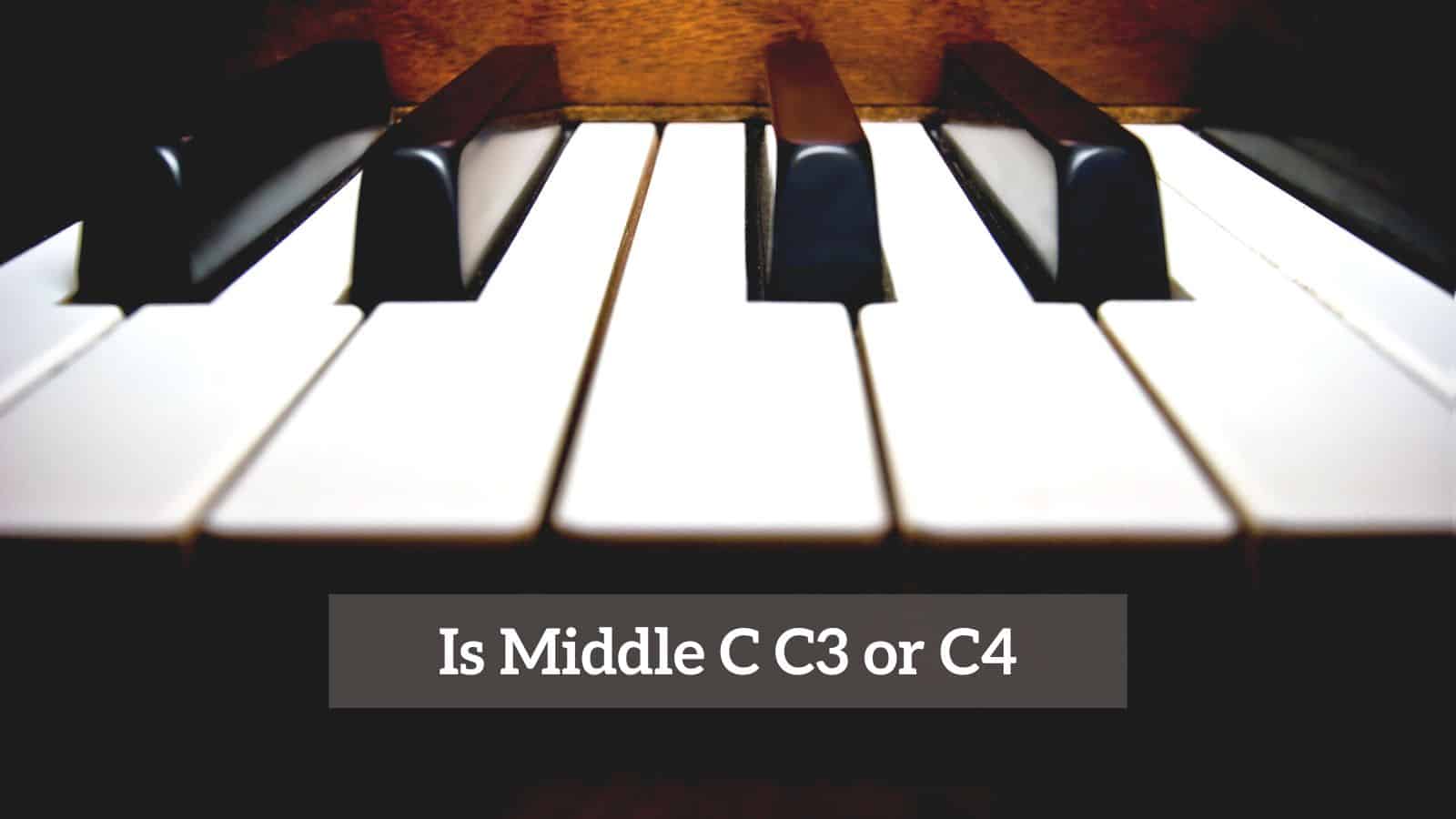
If you ask any musician, “is middle C C3 or C4?” you will get two different answers. Some will say C3, while others (and the majority) will say C4 because the orchestra tunes to the A above middle C or the oboe’s A4 (A4 = 440 Hz or 440 vibrations per second).
DISCLOSURE: This post may contain affiliate links, meaning when you click the links and make a purchase, we receive a commission.
What Is Middle C?
There is nothing “middle” about “middle C” until we look at music notation. When you look at the illustration below, there are many C-notes on the keyboard, but which one is middle C?

A bit confusing if we cannot pinpoint, for example, D above middle C. Which C is it? The first one? The second, third, fourth, or fifth one? So it is a bit confusing if you don’t know which one exactly is being referred to.
Chances are, if you took music lessons, especially piano lessons, one of the first notes you had to learn was Middle C.
Middle C is like a landmark in music—it gives us a specific place on the map to tell us where we are. To put it in perspective, look at the image below showing middle C in the treble and bass clef.
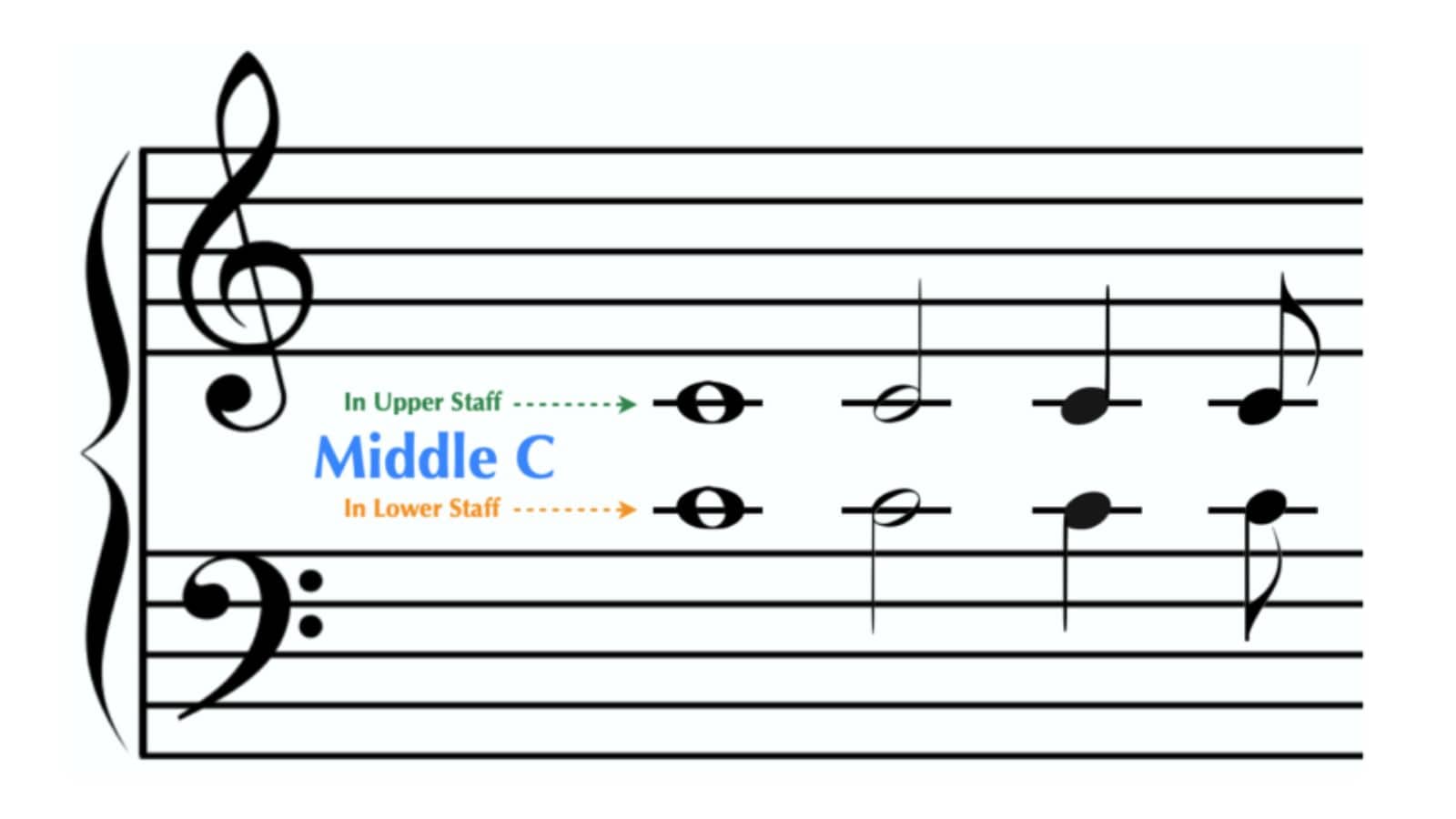
Middle C is precisely the same note in both the treble and bass clef—in the treble clef, it uses a ledger line below the stave, and in the bass clef, it uses a ledger line above the stave, but it is still the same note.
To put all of this in perspective, here is the middle C (purple) shown along with all the other C’s on a piano keyboard:

But we still have not answered the question of whether middle C C3 or C4, and we’ll delve deeper into the next section.
Is Middle C C3 or C4
Where Is Middle C Located?
Well, it depends on how you count the notes on the keyboard. The international standard is to use American Standard Pitch Notation (ASPN). ASPN is also known as Scientific Pitch Notation (SPN for short) or International Pitch Notation (IPN).
When we need to talk about specific notes or pitches, we’ll need a system everybody understands, and ASPN gives this tool.
Every single note that the human ear can hear is given its own “name” or number (such as A) with an octave indication in subscript (A4) to show which exact pitch is referred to.
On a keyboard, the octaves are divided to start on C each time. Starting with a zero (0) eliminates the need for negative numbers (more on this a bit later). Middle C is marked with blue, and the standard tuning A, A4 = 440, is marked in yellow.

ASPN labels are helpful for quickly locating specific notes on the piano keyboard and referring to notes when talking about them. As you can see, the piano keyboard has all seven octaves. It also comprises a small portion of octaves 0 and 8.
Regardless of instrument or voice type, ASPN designations are the same. In other words, whether you are playing a flute, trombone, violin, or singing, a C4 will always be the same note (middle C).
To put all of this into perspective, look at the image below. The octave sign above the last two notes means it is played an octave higher than actually written—to avoid many ledger lines.
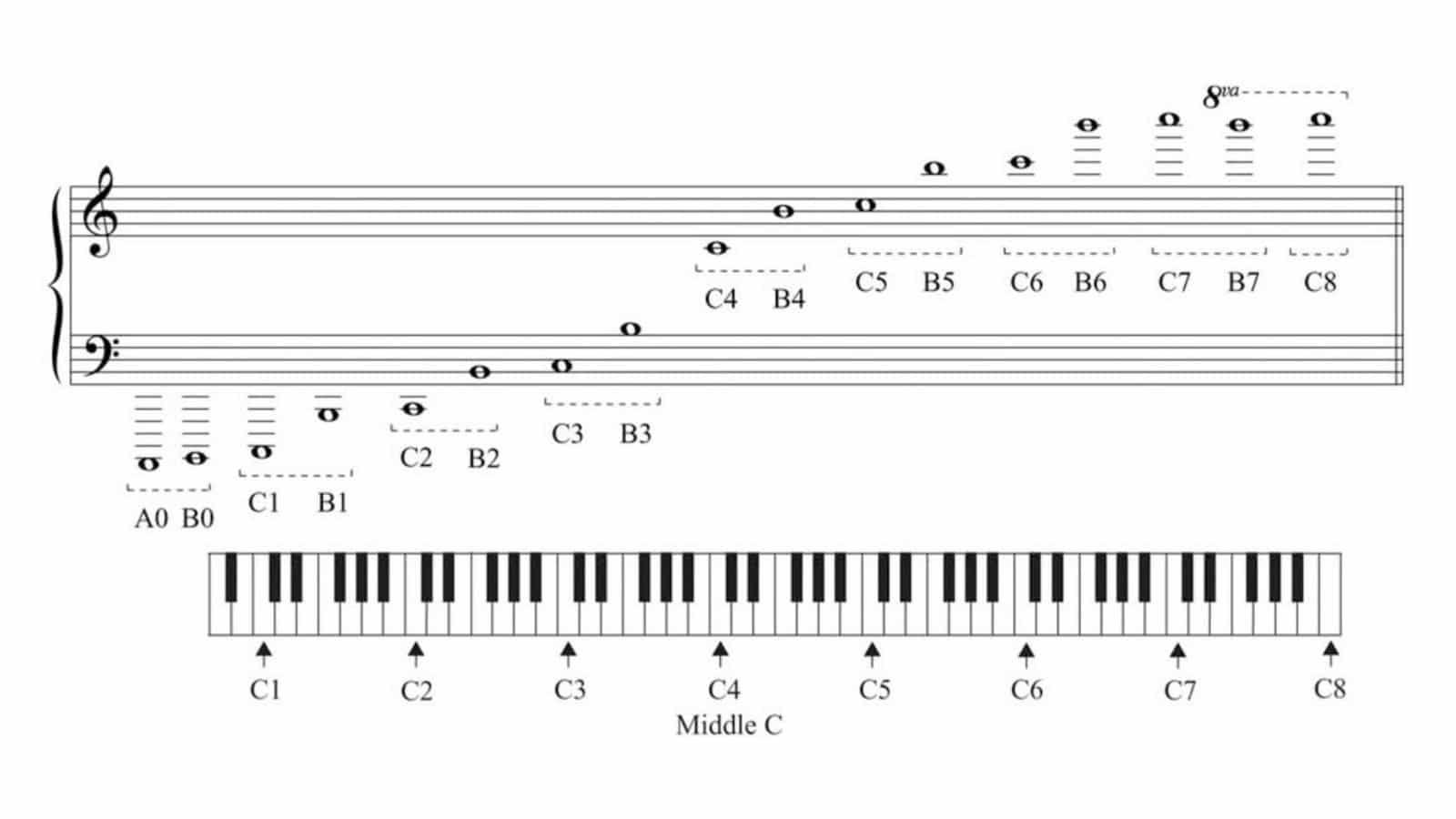
Bösendorfer 290 Imperial—an Exception
Ferruccio Busoni, an Italian composer, conductor, and pianist, precisely transcribed J.S. Bach’s famous organ pieces. However, he quickly realized he needed more bass notes to emulate the organ’s 16 to 32-foot bass pipes justice.
Ludwig Bösendorfer was up for the task and created the prototype piano with eight full octaves. Not only Busoni begins to recognize the unique features of the—afterward dubbed—Imperial Concert Grand.
Composers such as Bartók, Debussy, and Ravel composed music that can only be played and interpreted at the Imperial Concert Grand.
Remember, the standard keyboard starts at A0, shown below.
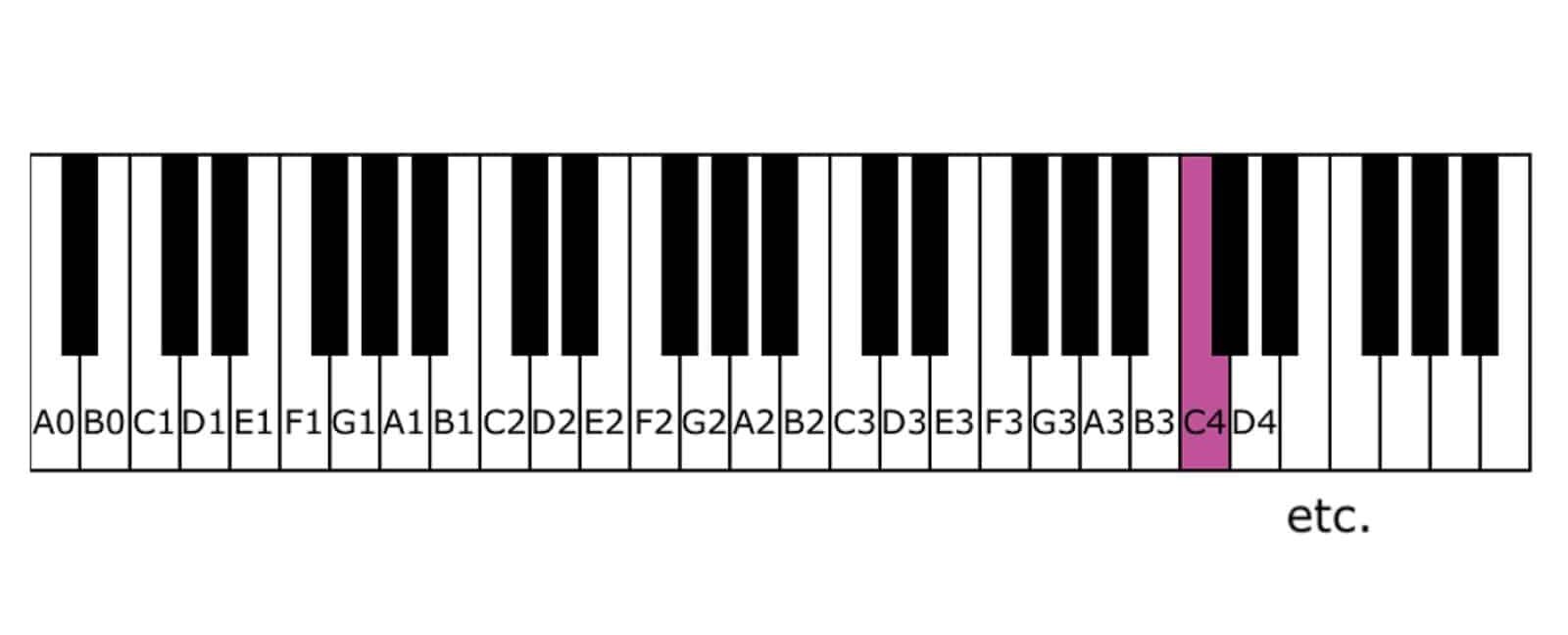
The Bösendorfer Imperial 290 has 97 keys, or eight full octaves, while the Bösendorfer 225 has 92 keys. This means they start counting the notes at C0 on the Imperial 290 model and F0 on the 225 models.
The extra keys are colored black so that a pianist does not get confused while playing. Initially, the extra keys were covered by a removable panel. You can learn more about this fantastic piano here.
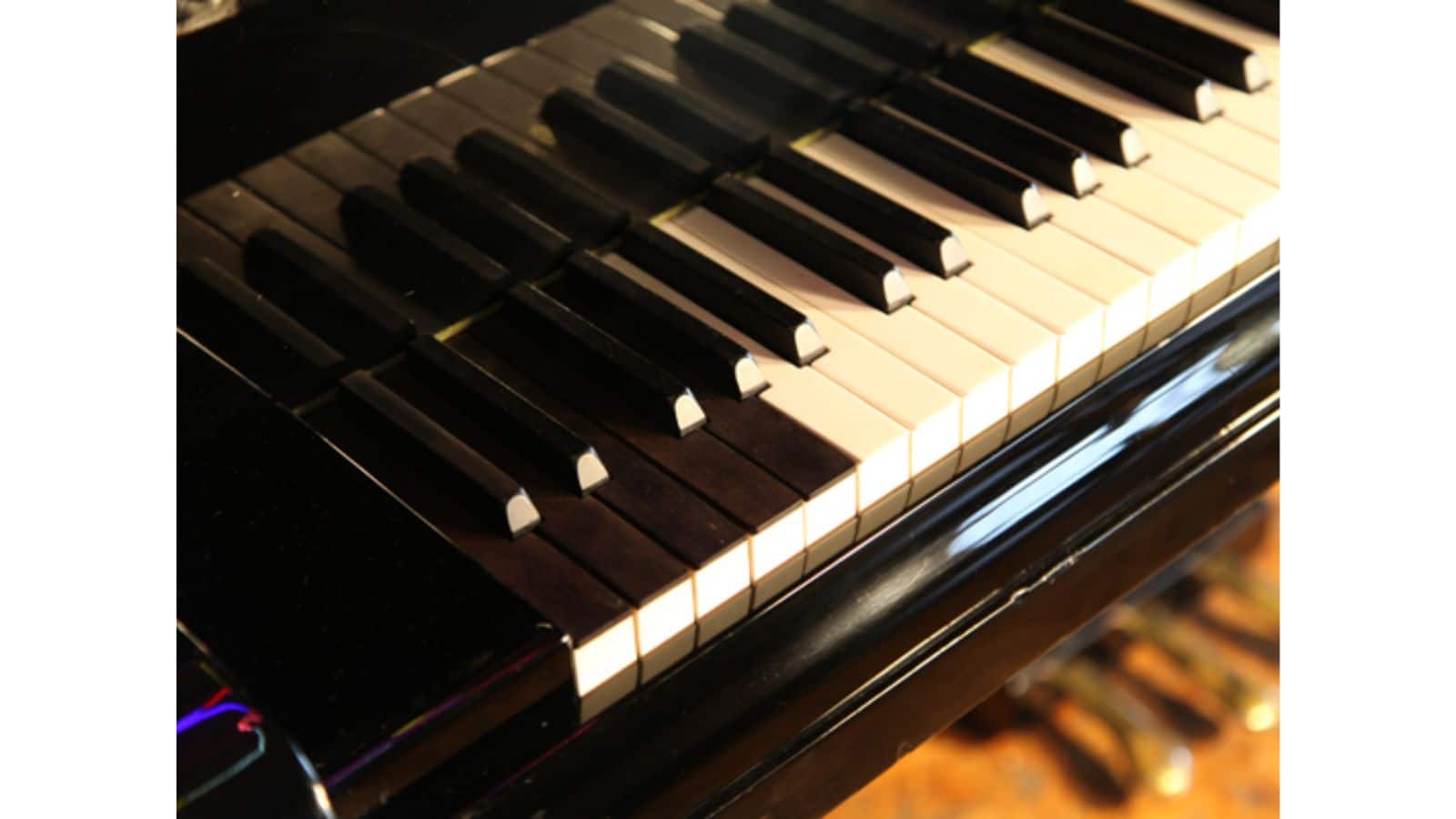
Where Did Middle C = C3 Come From?
There are two answers to this question. The first is Yamaha and its keyboards. Because a keyboard usually has 61 notes instead of 88, they needed to “move” the middle C up a bit to avoid numbering the octaves from -1.
On a 61-key keyboard, the third C (middle C) is the third C from the bottom of the keyboard, and thus it starts on C1 and not C0 or even C-1. And that’s that. They also number their full-size digital pianos in the same way as C1.
What about MIDI?
MIDI cannot distinguish between sharps, flats, and naturals as we do. Instead, each note has a number. Middle C, or C4, will always be note number 60, and C-sharp will be note number 61, so it goes on.
Always. A4 will always be note number 69. Some programs will say middle C is C3, while others can say it is C5. The software MaxMSP defines middle C as C3, while Apple’s Garageband defines middle C as C3. The main point is middle C (standard C4) will always be note number 60.
To Summarize
Middle C is C4 according to American Standard Pitch Notation. The International Standards Organization (ISO) also ratified and accepted this international standard.

wouldn’t it be easier to give the hertz for c4 I think it is 256htz